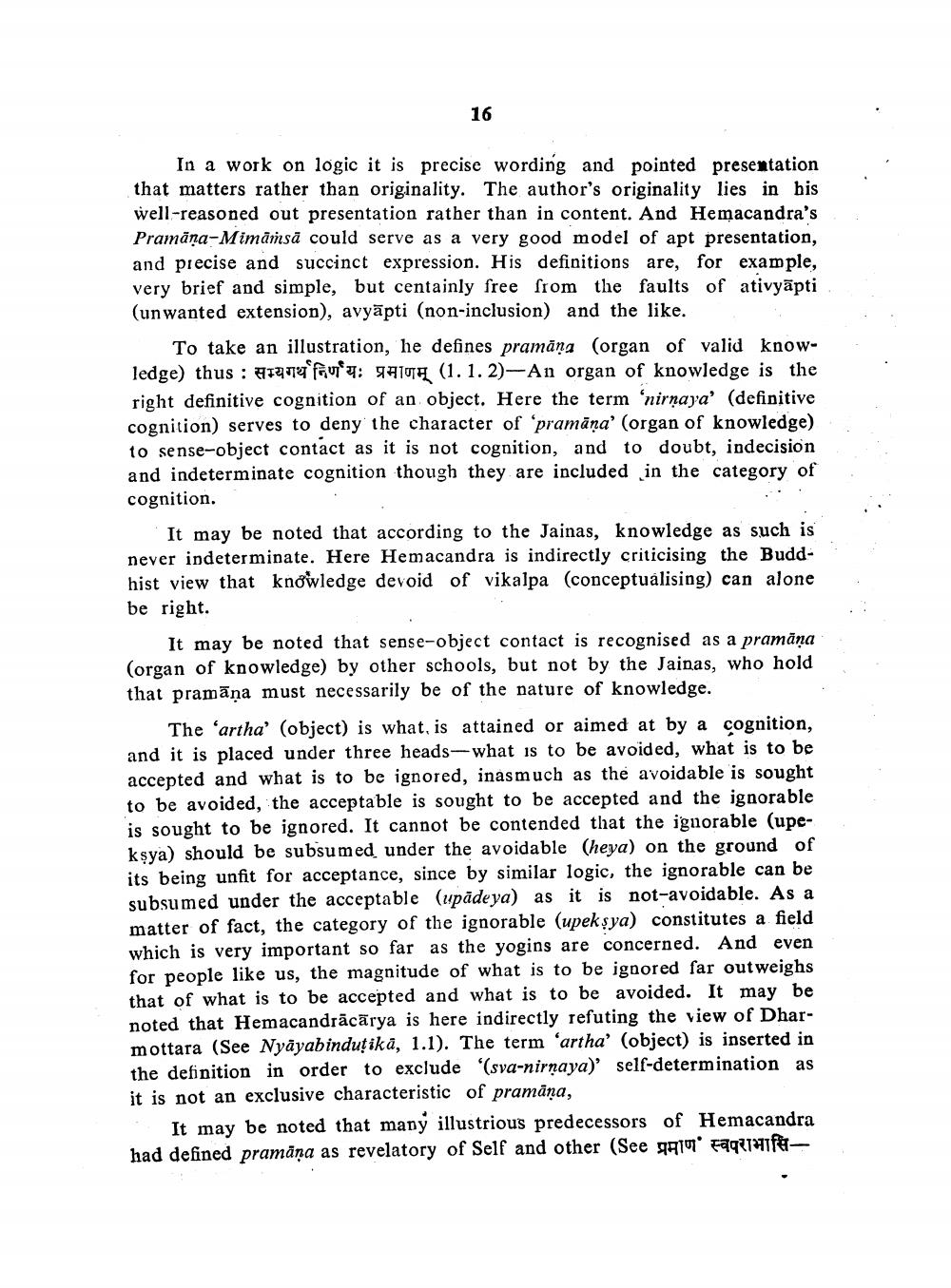________________
16
In a work on logic it is precise wording and pointed presentation that matters rather than originality. The author's originality lies in his well-reasoned out presentation rather than in content. And Hemacandra's Pramāņa-Mimāmsă could serve as a very good model of apt presentation, and precise and succinct expression. His definitions are, for example, very brief and simple, but centainly free from the faults of ativyāpti (unwanted extension), avyāpti (non-inclusion) and the like.
To take an illustration, he defines pramāng (organ of valid knowledge) thus : 129 fury: 941074 (1. 1. 2)-An organ of knowledge is the right definitive cognition of an object. Here the term 'nirnaya' (definitive cognition) serves to deny the character of 'pramāna' (organ of knowledge) to sense-object contact as it is not cognition, and to doubt, indecision and indeterminate cognition though they are included in the category of cognition.
It may be noted that according to the Jainas, knowledge as such is never indeterminate. Here Hemacandra is indirectly criticising the Buddhist view that knowledge devoid of vikalpa (conceptualising) can alone be right.
It may be noted that sense-object contact is recognised as a pramäņa (organ of knowledge) by other schools, but not by the Jainas, who hold that pramāņa must necessarily be of the nature of knowledge.
The 'artha' (object) is what, is attained or aimed at by a cognition, and it is placed under three heads-what is to be avoided, what is to be accepted and what is to be ignored, inasmuch as the avoidable is sought to be avoided, the acceptable is sought to be accepted and the ignorable is sought to be ignored. It cannot be contended that the ignorable (upekşya) should be subsumed under the avoidable (heya) on the ground of its being unfit for acceptance, since by similar logic, the ignorable can be subsumed under the acceptable (upādeya) as it is not-avoidable. As a matter of fact, the category of the ignorable (upekşya) constitutes a field which is very important so far as the yogins are concerned. And even for people like us, the magnitude of what is to be ignored far outweighs that of what is to be accepted and what is to be avoided. It may be noted that Hemacandrācārya is here indirectly refuting the view of Dharmottara (See Nyāyabindutikā, 1.1). The term 'artha' (object) is inserted in the definition in order to exclude '(sva-nirnaya)' self-determination as it is not an exclusive characteristic of pramāna,
It may be noted that many illustrious predecessors of Hemacandra had defined pramāna as revelatory of Self and other (See प्रमाण स्वपराभासि




